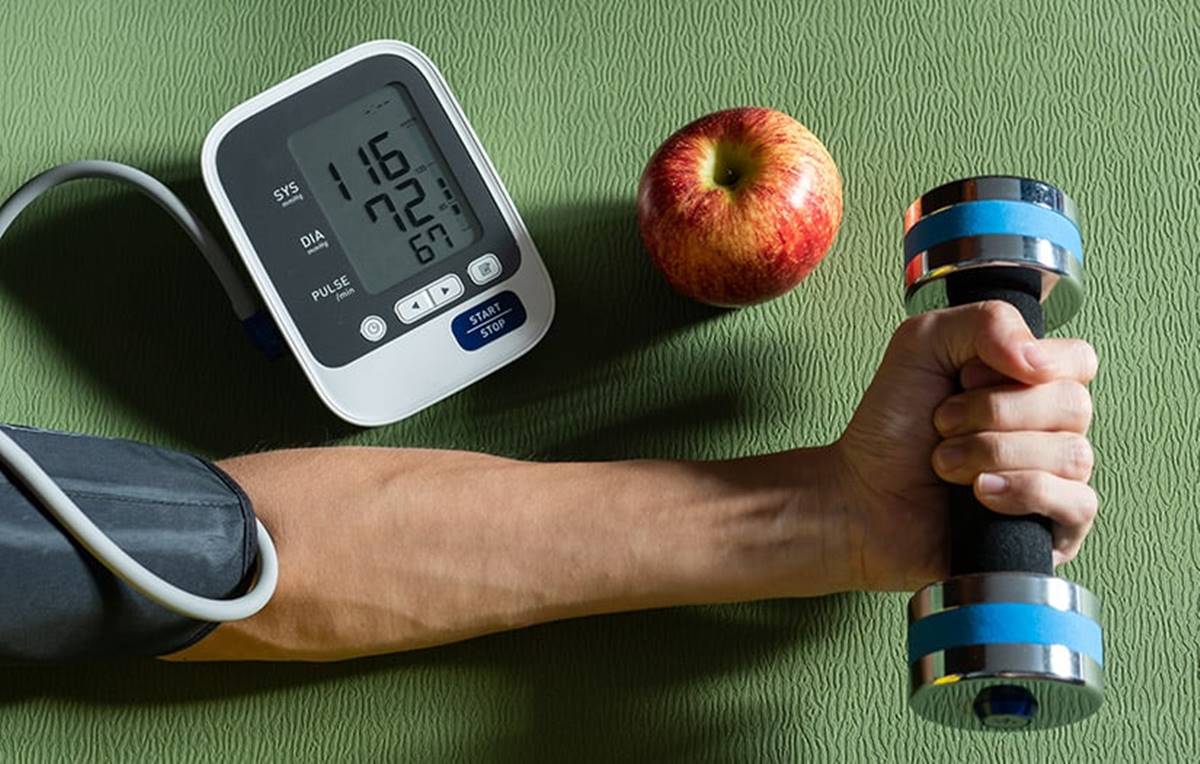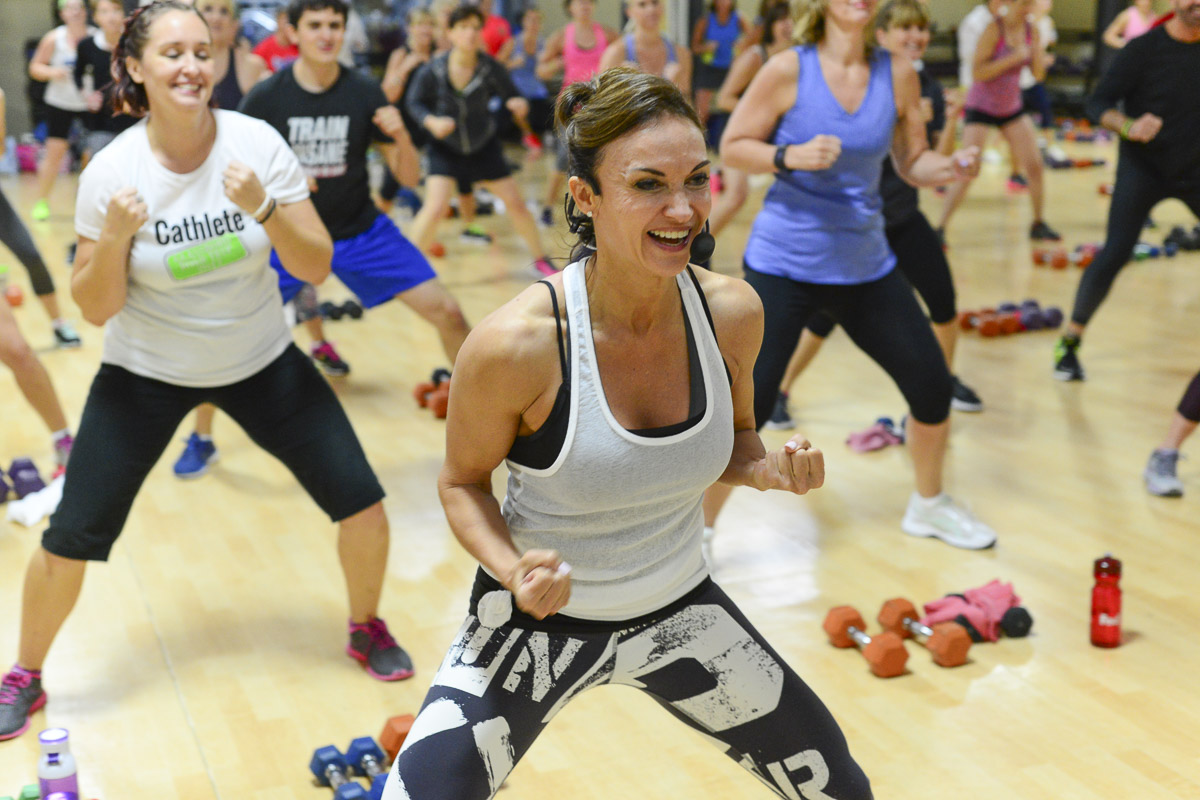

Featured
How To Increase Cardiovascular Fitness
Modified: January 22, 2024
Discover the featured guide on how to increase cardiovascular fitness. Boost your endurance and improve heart health with expert tips and effective workouts.
Introduction
Cardiovascular fitness, often referred to as aerobic endurance, is a crucial component of overall physical fitness. It relates to the ability of the cardiovascular and respiratory systems to supply oxygen-rich blood to the muscles during prolonged physical activity.
Having good cardiovascular fitness not only improves your ability to perform daily activities but also enhances your athletic performance and reduces the risk of various chronic diseases. It boosts your energy levels, increases stamina, and improves mental well-being.
In today’s sedentary lifestyle, where technology and convenience have made us more inactive, it’s essential to prioritize cardiovascular health. Whether you’re a beginner starting your fitness journey or an experienced enthusiast aiming to take your fitness to the next level, improving cardiovascular fitness should be a key focus.
This article provides a comprehensive guide on how to increase cardiovascular fitness. It covers the importance of cardiovascular fitness, assessing your current fitness level, setting goals, choosing appropriate exercises, applying the principle of progressive overload, incorporating interval training, cross-training, monitoring progress, and overcoming common barriers.
By following the steps outlined in this guide, you’ll be on your way to improving your cardiovascular fitness and reaping the associated health benefits.
Importance of Cardiovascular Fitness
Cardiovascular fitness is essential for maintaining optimal health and well-being. Here are some key reasons why improving cardiovascular fitness should be a priority in your fitness journey:
- Improved heart health: Engaging in regular cardiovascular exercise helps strengthen the heart muscle, making it more efficient at pumping blood. This reduces the risk of heart disease and other cardiovascular problems.
- Increased energy levels: Cardiovascular exercise improves blood circulation and oxygen delivery to the muscles and tissues, resulting in increased energy levels and reduced fatigue.
- Weight management: Cardiovascular workouts burn calories, making it an effective tool for weight loss and weight management. Regular cardio exercise can help you maintain a healthy body weight and reduce the risk of obesity-related diseases.
- Enhanced mental well-being: Cardiovascular activities release endorphins, also known as “feel-good” hormones, which can help reduce stress, anxiety, and depression. It promotes better sleep and improves overall mental well-being.
- Reduced risk of chronic diseases: Engaging in regular cardio exercise has been linked to a lower risk of chronic diseases such as type 2 diabetes, high blood pressure, and certain types of cancer.
- Improved athletic performance: Cardiovascular fitness is crucial for athletes looking to enhance their performance. It improves endurance, stamina, and oxygen utilization, allowing athletes to perform at a higher intensity for longer durations.
By incorporating cardiovascular exercise into your fitness routine, you can experience these benefits and improve your overall quality of life. Whether your goal is to improve your health, boost your energy levels, or enhance your athletic performance, cardiovascular fitness is the foundation for achieving these goals.
Assessing Current Fitness Level
Before embarking on a journey to improve your cardiovascular fitness, it’s essential to assess your current fitness level. This assessment not only helps you understand where you currently stand but also allows you to set realistic goals and track your progress effectively.
Here are some methods to assess your current cardiovascular fitness:
- Resting Heart Rate: Measure your resting heart rate by counting the number of beats per minute when you are at complete rest. A lower resting heart rate generally indicates better cardiovascular fitness.
- Cardiovascular Endurance Test: One popular method is the 1-mile walk/run test. Time yourself as you walk or run a mile at a moderate pace. The faster you complete the mile, the better your cardiovascular endurance.
- Borg Scale of Perceived Exertion: Use a scale from 1 to 10 to rate your perceived exertion during a cardio exercise session. This subjective assessment provides insight into how hard you feel you’re working.
- Step Test: Perform a step test by stepping up and down a step or platform for a specific duration while tracking your heart rate recovery. The faster your heart rate returns to normal, the better your cardiovascular fitness.
- Maximal Oxygen Uptake (VO2 max) Test: This test, usually conducted in a laboratory setting, measures your body’s ability to utilize oxygen during exercise. It provides an accurate assessment of your cardiovascular fitness level.
By evaluating your fitness level using these methods, you can gain insights into your current cardiovascular endurance, identify areas for improvement, and set realistic goals. Remember that everyone is at a different starting point, so be kind to yourself and focus on progress rather than comparison to others.
Setting Goals for Improvement
Setting clear and specific goals is essential when it comes to improving your cardiovascular fitness. Goals provide direction, motivation, and a benchmark to track your progress. Here are some tips for setting effective goals:
- Be specific: Set clear and specific goals that are measurable. For example, instead of saying, “I want to improve my cardiovascular fitness,” a specific goal could be, “I want to be able to run 3 miles without stopping within three months.”
- Make them realistic: Set goals that are challenging yet attainable based on your current fitness level. Setting unrealistic goals can lead to frustration and discouragement.
- Focus on both short-term and long-term goals: Break down your overall fitness goal into smaller, achievable milestones. This will help you stay motivated and provide a sense of accomplishment along the way.
- Include both outcome and process goals: Outcome goals focus on the end result, such as completing a 5K race. Process goals focus on the actions and behaviors needed to achieve the outcome, such as running three times a week or increasing workout duration gradually.
- Write them down: Documenting your goals makes them more tangible and increases your commitment to achieving them. Write them in a journal or create a vision board to visualize your goals.
- Regularly review and revise: Review your goals regularly to track your progress and make any necessary adjustments. As you progress, you may need to set new goals that align with your improved fitness level.
Remember, goals should be personal and tailored to your specific needs and desires. They should also be flexible, allowing for adjustments as circumstances change. Setting meaningful goals will provide you with the necessary motivation and focus to improve your cardiovascular fitness over time.
Choosing Appropriate Cardiovascular Exercises
When it comes to improving cardiovascular fitness, choosing the right exercises is key. Here are some factors to consider when selecting appropriate cardiovascular exercises:
- Preference and enjoyment: Choose activities that you enjoy and look forward to doing. This will increase your adherence to the exercise routine and make it more sustainable in the long run.
- Impact on joints: If you have joint issues or are starting with low fitness levels, opt for low-impact exercises such as swimming, cycling, or using an elliptical machine. These exercises are gentler on the joints and reduce the risk of injury.
- Variety and cross-training: Incorporate a variety of cardiovascular exercises into your routine to target different muscle groups and prevent boredom. Cross-training also helps improve overall fitness and reduces the risk of overuse injuries.
- Intensity levels: Consider your current fitness level and set appropriate intensity levels for your cardiovascular workouts. Beginners may start with low to moderate-intensity exercises and gradually increase intensity as their fitness improves.
- Time commitment: Choose exercises that can fit into your schedule. Some cardiovascular exercises require longer durations, while others can be done in shorter bursts. Find a balance that works for you and aligns with your lifestyle.
- Accessibility and resources: Consider the availability of resources and facilities. Whether it’s running outdoors, joining a fitness class, utilizing gym equipment, or following online workout videos, choose exercises that are easily accessible and suit your resources.
Examples of effective cardiovascular exercises include brisk walking, jogging, running, cycling, swimming, dancing, kickboxing, and HIIT workouts. Mix and match different exercises based on your preferences and goals to keep your routine engaging and challenging.
Remember to start at a pace that suits your fitness level and gradually increase the intensity and duration of your workouts as your cardiovascular fitness improves. Always listen to your body and consult with a healthcare professional before starting any new exercise program.
Progressive Overload and How to Apply It
Progressive overload is a fundamental principle of improving cardiovascular fitness. It involves gradually increasing the intensity, duration, or frequency of your cardiovascular workouts over time to continually challenge your body and stimulate adaptation. Here’s how to apply progressive overload effectively:
- Increase intensity: Gradually increase the intensity of your workouts by incorporating intervals, adding resistance, or increasing the incline. For example, if you’re jogging, try incorporating short bursts of sprinting or running on an incline to challenge your cardiovascular system.
- Extend duration: Gradually increase the duration of your cardio sessions. If you’re currently doing 20 minutes of cardio, aim to add an extra 5 minutes each week until you reach your desired duration. This helps to improve your endurance and stamina over time.
- Increase frequency: Increase the frequency of your cardiovascular workouts to challenge your body more frequently. If you’re currently doing cardio three times a week, consider adding another day or two to your routine.
- Vary your workouts: Continually challenge your body by incorporating different types of cardiovascular exercises into your routine. Mix up activities, intensities, and durations to keep your workouts interesting and to avoid plateaus.
- Track your progress: Keep a record of your workouts, including distance, time, and intensity. Regularly track your progress to ensure you’re gradually increasing the workload and making progress towards your goals.
- Listen to your body: Pay attention to how your body responds to the overload. While it’s important to push yourself, it’s equally crucial to listen to your body’s signals and allow for adequate rest and recovery to prevent injuries and overtraining.
Applying progressive overload ensures that your cardiovascular system continues to adapt and improve over time. It’s important to note that progression should be gradual and individualized based on your fitness level and capabilities. Consult a fitness professional to help guide you through an appropriate progressive overload plan for optimal results.
Incorporating Interval Training
Interval training is a highly effective method to improve cardiovascular fitness and maximize calorie burn. It involves alternating between periods of high-intensity exercise and periods of rest or lower intensity. Incorporating interval training into your cardiovascular workouts can help boost your endurance, increase your workout efficiency, and break through fitness plateaus. Here’s how to incorporate interval training:
- Choose your mode of exercise: Interval training can be applied to various cardiovascular exercises such as running, cycling, swimming, rowing, or even jumping rope. Choose an exercise that you enjoy and that challenges you.
- Warm-up: Begin with a 5-10 minute warm-up of light cardio to prepare your body for the upcoming intervals. This can be a brisk walk or a light jog.
- Set your work-to-rest ratio: Determine the length of your work and rest periods. For beginners, start with a 1:1 ratio, such as 30 seconds of high-intensity exercise followed by 30 seconds of rest or low-intensity exercise. As you progress, you can increase the work interval and decrease the rest interval to challenge yourself further.
- Perform the intervals: Alternate between the high-intensity phase and the rest phase for the designated duration. During the high-intensity phase, push yourself to a challenging but sustainable effort level. This could be a fast sprint, a vigorous cycling pace, or a brisk swim. During the rest period, allow yourself to recover and lower your intensity.
- Gradually progress: As your fitness improves, aim to increase either the intensity or the duration of the high-intensity intervals. You can also decrease the rest time, gradually transitioning to a more challenging work-to-rest ratio.
- Cool-down: Finish your workout with a 5-10 minute cool-down of light cardio and stretching to allow your body to gradually return to a resting state.
Integrating interval training into your cardiovascular routine can help enhance your aerobic capacity, increase calorie burn, and improve your overall cardiovascular fitness. However, it’s important to consult with a healthcare professional or fitness expert before starting any high-intensity exercise program, especially if you have any underlying medical conditions.
Cross-training to Enhance Cardiovascular Fitness
Cross-training involves engaging in a variety of different exercises and activities to improve overall fitness and enhance cardiovascular health. It helps prevent boredom, reduces the risk of overuse injuries, and targets different muscle groups. Here’s how to incorporate cross-training into your routine:
- Choose different activities: Select a range of cardiovascular exercises that you enjoy and that challenge different parts of your body. For example, if you primarily run, consider adding swimming, cycling, or group fitness classes to your routine.
- Focus on complementary exercises: Incorporate activities that complement your main form of exercise. For example, if you’re a runner, including strength training exercises for the lower body can help improve your running performance.
- Vary intensity and duration: Mix up the intensity and duration of your cross-training exercises. Try longer, steady-state cardio sessions in one activity, and incorporate shorter, high-intensity intervals in another. This variation challenges your cardiovascular system in different ways.
- Include different modes of exercise: Explore a range of activities that target different muscle groups and provide a mix of aerobic and anaerobic benefits. Examples include swimming, dancing, kickboxing, stair climbing, hiking, and rowing.
- Balance impact and recovery: Cross-training allows you to alternate between high-impact and low-impact activities. This gives your body time to recover from the stress of one form of exercise while still maintaining cardiovascular fitness through lower impact activities.
- Keep it enjoyable: The key to successful cross-training is to choose activities that you genuinely enjoy. This keeps you motivated and engaged, making it more likely that you will stick to your fitness routine in the long run.
Cross-training not only enhances cardiovascular fitness but also provides a well-rounded approach to overall fitness and helps prevent overuse injuries. It keeps your workouts fresh, challenges your body in new ways, and allows you to explore different physical activities that you may come to love. Remember to listen to your body, gradually increase the intensity of new exercises, and seek guidance from fitness professionals if needed.
Monitoring Progress and Adjusting Training Plan
Monitoring your progress is crucial for understanding how your cardiovascular fitness is improving and whether your current training plan is effective. By regularly assessing and adjusting your training plan, you can ensure that you continue to make progress towards your fitness goals. Here’s how to effectively monitor progress and make necessary adjustments:
- Track your workouts: Keep a record of your workouts, including the type of exercise, duration, intensity, and any additional notes. This allows you to see your progress over time and identify trends or patterns.
- Use a fitness tracker: Wearable devices, such as fitness trackers or smartwatches, can provide valuable data on your heart rate, distance covered, and calories burned during exercise. This information can help you measure the intensity and efficiency of your cardiovascular workouts.
- Assess your physical performance: Regularly evaluate your performance in specific exercises or activities. For example, check if you can run longer distances, complete high-intensity intervals with greater ease, or swim a certain distance faster. These benchmarks can indicate improvements in your cardiovascular fitness.
- Take body measurements: Although cardiovascular fitness is not solely reflected in changes in body composition, tracking measurements such as body weight, body fat percentage, or waist circumference can provide additional insights into your progress.
- Listen to your body: Pay attention to how you feel during and after your workouts. Notice any changes in energy levels, recovery time, or overall performance. If you consistently feel fatigued or lack progress, it may be a sign that adjustments need to be made.
- Adjust your training plan: Based on your progress and observations, modify your training plan as needed. This may involve increasing the intensity or duration of your workouts, adding new exercises or activities, or incorporating more rest and recovery days. Individualize the plan to suit your goals and avoid stagnation.
- Seek professional guidance: If you’re unsure about monitoring progress or making adjustments, consider consulting with a fitness professional or coach. They can provide expert advice, assess your performance, and help you create a customized training plan.
Remember that progress may not always be linear, and there will be ups and downs along the way. Be patient, stay consistent, and celebrate even small improvements in your cardiovascular fitness. Regularly monitoring your progress and adjusting your training plan ensures that you continue to challenge yourself, avoid plateaus, and maintain motivation on your fitness journey.
Overcoming Common Barriers and Challenges
When it comes to improving cardiovascular fitness, it’s natural to encounter various barriers and challenges along the way. However, with the right strategies and mindset, you can overcome these obstacles and stay on track towards your goals. Here are some common barriers and effective ways to overcome them:
- Lack of time: Finding time for exercise can be challenging in a busy schedule. Prioritize your workouts by scheduling them in your calendar, waking up earlier, or breaking them into shorter bouts throughout the day. Make it a non-negotiable part of your routine.
- Lack of motivation: Motivation can ebb and flow, making it difficult to stay consistent. Find strategies to stay motivated, such as setting achievable goals, finding an exercise buddy, or rewarding yourself for reaching milestones. Remind yourself of the benefits of cardiovascular fitness and how it aligns with your overall well-being.
- Plateaus: It’s common to reach a point where progress seems to stall. To overcome plateaus, make adjustments to your training plan, increase intensity or duration, try new exercises, or seek guidance from a fitness professional for fresh ideas and perspectives.
- Lack of accountability: It can be challenging to hold yourself accountable. Engage in activities that provide external accountability, such as joining a fitness group or enlisting a workout buddy. Consider working with a personal trainer who can monitor your progress and provide guidance and encouragement.
- Physical discomfort or pain: Some individuals may experience discomfort or pain during exercise. It’s crucial to differentiate between muscle soreness and injury. If you experience persistent pain, consult a healthcare professional to address the issue and explore modifications or alternative exercises that are comfortable for you.
- Weather or environmental constraints: Inclement weather or lack of access to suitable outdoor spaces can hinder your workouts. Utilize indoor facilities, such as gyms or fitness centers, or explore home workout options like exercise videos or equipment. Adapt your routine to the resources available to you.
- Mental barriers: Negative self-talk or limiting beliefs can hinder progress. Practice positive affirmations, surround yourself with positive influences, and focus on the progress you’ve already made. Break down your goals into smaller, more manageable steps to build confidence and keep you moving forward.
Remember, overcoming challenges is part of the journey. By adopting a proactive mindset, seeking support when needed, and being flexible in your approach, you can break through barriers and continue progressing towards improved cardiovascular fitness.
Conclusion
Improving cardiovascular fitness is a journey that requires commitment, consistency, and a well-structured plan. By prioritizing cardiovascular health, you can enhance your overall well-being, increase energy levels, and reduce the risk of chronic diseases. Here’s a quick recap of the key steps to increase your cardiovascular fitness:
- Recognize the importance of cardiovascular fitness and its numerous benefits for your health and performance.
- Assess your current fitness level to establish a starting point and set realistic goals.
- Choose appropriate cardiovascular exercises that you enjoy and that challenge your body.
- Apply the principle of progressive overload to gradually increase the intensity, duration, or frequency of your workouts.
- Incorporate interval training to boost endurance and calorie burn.
- Benefit from cross-training by diversifying your workouts and targeting different muscle groups.
- Monitor your progress through various methods, such as tracking workouts and assessing physical performance.
- Adjust your training plan as needed to keep challenging yourself and avoiding plateaus.
- Overcome common barriers and challenges by finding solutions and maintaining a positive mindset.
Remember, everyone’s fitness journey is unique, and it’s important to listen to your body, seek professional guidance when needed, and celebrate the progress you make along the way. Stay committed, stay motivated, and enjoy the process of improving your cardiovascular fitness. As you do so, you’ll reap the rewards of a healthier and more resilient cardiovascular system for years to come.









